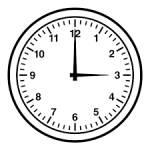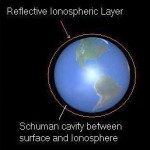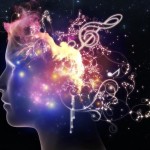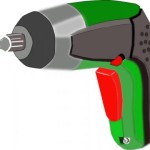What is entrainment and how does it relate to music? The basics of entrainment work when two rhythmical objects eventually sync with one another. The example commonly used is that of the Dutch scientist, Christian Huygens, where he noted that pendulum clock clocks eventually synchronize. As noted by Martin Clayton (see link to article below), the phenomenon of entrainment goes beyond the mechanical world and into the biological world. How it effects music, is what we’re going to consider.
 In human behavior, we see entrainment through our internal body “clocks” as they are reset to sunlight. It has also been noted that when two individuals interact (the interaction part is important), body movements between the two will rhythmically entrain while in conversation. Entrainment within the body itself has been noted in heart rates based on the music people listen to. The more upbeat the music, the faster the heartbeat. So, in a nutshell, in order to have an occurrence of entrainment, two objects must come into sync with one another. Those “objects” could be at the cellular level, body parts (including the heart) and even with physical objects that have a rhythm (like the clocks described above).
In human behavior, we see entrainment through our internal body “clocks” as they are reset to sunlight. It has also been noted that when two individuals interact (the interaction part is important), body movements between the two will rhythmically entrain while in conversation. Entrainment within the body itself has been noted in heart rates based on the music people listen to. The more upbeat the music, the faster the heartbeat. So, in a nutshell, in order to have an occurrence of entrainment, two objects must come into sync with one another. Those “objects” could be at the cellular level, body parts (including the heart) and even with physical objects that have a rhythm (like the clocks described above).
We’re going to consider how entrainment with the A=432 concert pitch works. In order to do that, we first need to look at the rhythm and frequencies within the earth itself. First on the list are the Schumann resonances. Simply put, they are “electromagnetic standing waves in the atmosphere, within the cavity formed by the surface of the earth and the ionosphere.” (Dickinson)
 The base Schumann resonance is 7.83. Included with the main resonance is all the harmonics, 14, 20, 26, 33, 39 and 45 Hz. If we go back and look at how entrainment works, it would seem natural that our bodies would want to entrain to frequencies that are shown to be within the earth itself. I believe in the article by Ingrid Dickinson, she also mentions that the 7.83 Schumann resonance is extremely close to the human alpha brain waves. It would seem logical that we’d be playing music that’s “in tune” with these frequencies so dissonance doesn’t occur.
The base Schumann resonance is 7.83. Included with the main resonance is all the harmonics, 14, 20, 26, 33, 39 and 45 Hz. If we go back and look at how entrainment works, it would seem natural that our bodies would want to entrain to frequencies that are shown to be within the earth itself. I believe in the article by Ingrid Dickinson, she also mentions that the 7.83 Schumann resonance is extremely close to the human alpha brain waves. It would seem logical that we’d be playing music that’s “in tune” with these frequencies so dissonance doesn’t occur.
What is dissonance? Musical dissonance occurs when you have two people playing the same note that are slightly out of tune or, two different notes that don’t sound good together. If you’ve ever seen an orchestra or band perform, a specified musician always gives a tuning note with the aid of a tuner. The reason is so that everyone will be playing the same pitches for the notes in the music. Musical instruments (with the exception of electronic keyboards) will vary in pitch depending on temperature and humidity. Therefore, they must be tuned frequently. Now, if you’ve ever heard a beginning band or orchestra, you have an idea of what dissonance sounds like. Young musicians are still learning how to hear and make their instruments play in tune with their fellow musicians. Until then, parents grimace in delight because their youngster is learning a musical instrument.
 Now, back to entrainment… In my article about singing at the A=432 concert pitch, I did a little experiment where I used a tuner (gStrings on my phone) that measured exact Hertz. YouTube is a wonderful source for hearing singers from countries all over the world that don’t use a piano or tuner to get a starting pitch. They simply start singing and let the music flow from within them. The interesting part about this? They ALL sang at a lower concert pitch than our standard tuning of A=440. All but three (out of 27 videos) were singing within the A=432 concert pitch range. The other three were probably closer to A=430. The Schumann resonances and alpha brain waves fit very closely within the tunings of A=432 concert pitch. In fact, they are almost exact.
Now, back to entrainment… In my article about singing at the A=432 concert pitch, I did a little experiment where I used a tuner (gStrings on my phone) that measured exact Hertz. YouTube is a wonderful source for hearing singers from countries all over the world that don’t use a piano or tuner to get a starting pitch. They simply start singing and let the music flow from within them. The interesting part about this? They ALL sang at a lower concert pitch than our standard tuning of A=440. All but three (out of 27 videos) were singing within the A=432 concert pitch range. The other three were probably closer to A=430. The Schumann resonances and alpha brain waves fit very closely within the tunings of A=432 concert pitch. In fact, they are almost exact.
 Another little experiment that I did was listen to power tools and things in my home. Since I recorded music with a drone on every note of the scale, I can tell exactly what note each of my appliances “play” when being used. Although I haven’t done further experiments, I found it interesting that things in my home buzz, beep, and squawk within the A=432 concert pitch. I think my home likes notes within that tuning system.
Another little experiment that I did was listen to power tools and things in my home. Since I recorded music with a drone on every note of the scale, I can tell exactly what note each of my appliances “play” when being used. Although I haven’t done further experiments, I found it interesting that things in my home buzz, beep, and squawk within the A=432 concert pitch. I think my home likes notes within that tuning system.
What does this tell us? It would seem beneficial to our physical bodies to be around items that have a resonate frequency within the A=432 concert pitch as well as listening to music that’s also in the A=432 concert pitch range. There would be less dissonance harmonically floating around in our atmosphere. As also mentioned in a previous article, “intent” of the musician creating the music is very important. There are many frequencies that people use in recordings that are not harmonious to the frequencies within the earth. However, the intent of the musician recording the music is often toward using that music for healing purposes. So, people are responding with good results because they’re responding out of that intent. I propose that if we combined healing music recorded at A=432 with the intent of healing purposes, there might be less “dis- ease” in our world.
Copyright 2015 by Del Hungerford
Here are links to a couple of articles that I garnered some great information from. They go into much more detail than I have:
- This article, by Dr. Frank Lipman, provides a great explanation as to how entrainment works in music. http://www.drfranklipman.com/what-is-entrainment/
- What is Entrainment? Definitions and Application in Musical Research by Martin Clayton. https://kb.osu.edu/dspace/bitstream/handle/1811/52979/EMR000137a-Clayton.pdf
- This article, by Ingrid P. Dickinson, provides some great information on the Schumann resonances and how the frequencies within our earth (microwaves, radio waves, cell phones waves, etc.) are negatively affecting our physical bodies. http://www.earthbreathing.co.uk/sr.htm
[mailerlite_form form_id=2]

